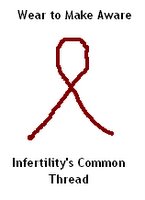 The next edging is a method that I learned while I was studying costume. I worked on a set of ballet tutus with organza overskirts. This edging was pretty hard wearing and the stitching disappeared into the net layers underneath, which was great as we didn't want there to be a heavy stripe where the overskirt ended. You simply straight stitch around as before, trim the edge to about 3mm and then zig zag over your straight stitching. Make sure on the zig zag round that the needle falls off the outside edge to really finish it well.
The next edging is a method that I learned while I was studying costume. I worked on a set of ballet tutus with organza overskirts. This edging was pretty hard wearing and the stitching disappeared into the net layers underneath, which was great as we didn't want there to be a heavy stripe where the overskirt ended. You simply straight stitch around as before, trim the edge to about 3mm and then zig zag over your straight stitching. Make sure on the zig zag round that the needle falls off the outside edge to really finish it well.  Here's one of the finished tutus.
Here's one of the finished tutus.

Next is the rolled hem made on an overlocker (serger). For years this was the only method I used. If your overlocker is set up just right, this can be a really easy and attractive finish on many fabric types. If you pull the edges as you're sewing then you will end up with a really wavy edge, I think they call it a lettuce edge (?).

This next method is my current favourite. I used to try and try to use a rolled hem foot and it drove me mental. So I gave up and used my overlocker for everything. When I started working in bridal I was horrified to learn that almost every dress was finished with a rolled hem - so I needed to learn quick! Running around a full hem on a bias cut skirt in silk charmeuse (on one of those fast, jumpy industrial machines)really cures your fear of this method, although I can't recommend it as a learning technique! But it really is worth mastering.
Below is a hem using a rolled hem foot and a straight stitch. I find it a very polished finish and it doesn't have that home-made feel that an overlocked rolled hem can (sometimes) have. It takes practice though, so be kind to yourself and start on crisp lightweight cottons and straight-ish edges and you'll get it in no time. The trickiest bit is starting and there are lots of tips around about how to get started. To be honest I just sort of push the fabric in and then use a pin to pull it through enough to plant the needle. I sit myself to the left of the machine as I find it easier to feed curved fabric into the roller that way, but really it comes down to practice.
 My final sample also uses a rolled hem foot but this time I used zig zag. This is a more casual finish and on the right fabric can create a pretty scalloped effect (you could probably use your blind hem stitch for a similar effect). This method is slightly easier than using the straight stitch too as it's a litle more forgiving if you go off course - your edges are a bit more firmly anchored.
My final sample also uses a rolled hem foot but this time I used zig zag. This is a more casual finish and on the right fabric can create a pretty scalloped effect (you could probably use your blind hem stitch for a similar effect). This method is slightly easier than using the straight stitch too as it's a litle more forgiving if you go off course - your edges are a bit more firmly anchored.

One thing that is always a bit of a fiddle is getting a nice corner. I thread a needle with two strands of thread and pull it through the corner so I have four 'tails'. I use this as a handle to start me off. This stops you getting really stuck on the lump at the corner.
 I hope these few techniques are useful to you. I'm not really a 'ruffly' girl but it's always handy to know a few different techniques so you have a choice. I never use the methods in the pattern instructions, seriously I just don't think they work.
I hope these few techniques are useful to you. I'm not really a 'ruffly' girl but it's always handy to know a few different techniques so you have a choice. I never use the methods in the pattern instructions, seriously I just don't think they work. Next time I'll show you the top these ruffles are attached to.





2 comments:
Beautiful work, Josie, and thanks for the edging tips
Great tips. Thanks for sharing.
Post a Comment